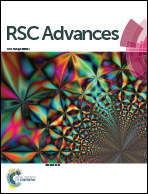Molecular imprinting as a tool for determining molecular markers: a lung cancer case
Abstract
Determining which cancer patients will be sensitive to a given therapy is essential for personalised medicine. Thus, it is important to develop new tools that will allow us to stratify patients according to their predicted response to treatment. The aim of work presented here was to use molecular imprinting for determining the sensitivity of lung cancer cell lines to ionising radiation based on cell surface proteomic differences. Molecularly imprinted polymer nanoparticles (nanoMIPs) were formed in the presence of whole cells. Following trypsinolysis, protein epitopes protected by complexing with MIPs were eluted from the nanoparticles and analysed by LC-MS/MS. The analysis identified two membrane proteins, neutral amino acid transporter B (0) and 4F2 cell-surface antigen heavy chain, the abundance of which in the lung cancer cells could indicate resistance of these cells to radiotherapy. This proof-of-principle experiments shows that this technology can be used in the discovery of new biomarkers and in development of novel diagnostic and therapeutic tools for a personalised medicine approach to treating cancer.



 Please wait while we load your content...
Please wait while we load your content...